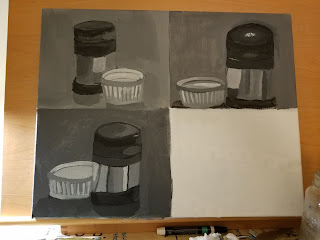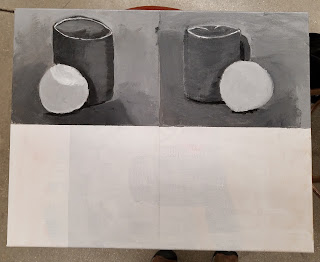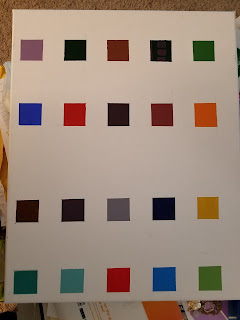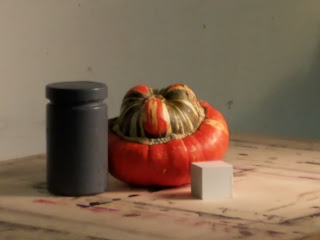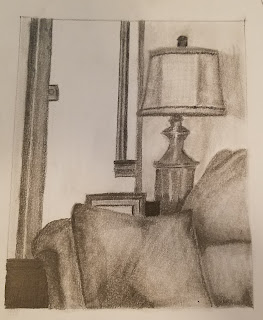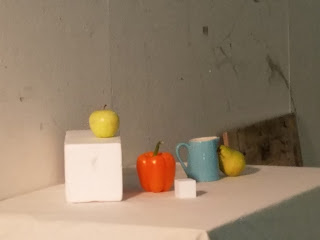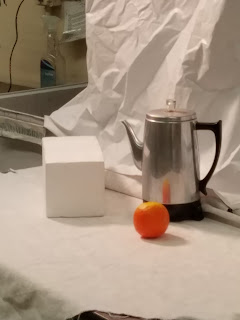Week 10 Begins: More Quick Paintings

We started the day by critiquing our homework. It didn't even occur to me to put a table under my items. Something I need to remember as we move on. As we did last week, we continued with monochromatic quick paintings. However, rather than using our Ivory black, we were instructed to get out our Ultramarine Blue and Burnt Umber. Turns out you can make fabulous bleach with these two colors. And not only that, you can tweak them to be warm or cold by adding more of one or the other. That makes it easier to bring the focus forward or back (cold recedes, warm comes forward). In the first painting, we had 2 items. We were instructed to paint quickly, but try to pay attention to negative space. I didn't quite manage to finish in the allotted time, however, it still is not bad. After then taking a break, Prof. Garguilo added a third item to the still life and we began again. This painting went more smoothly and I believe part of the reason is because I focused in close
